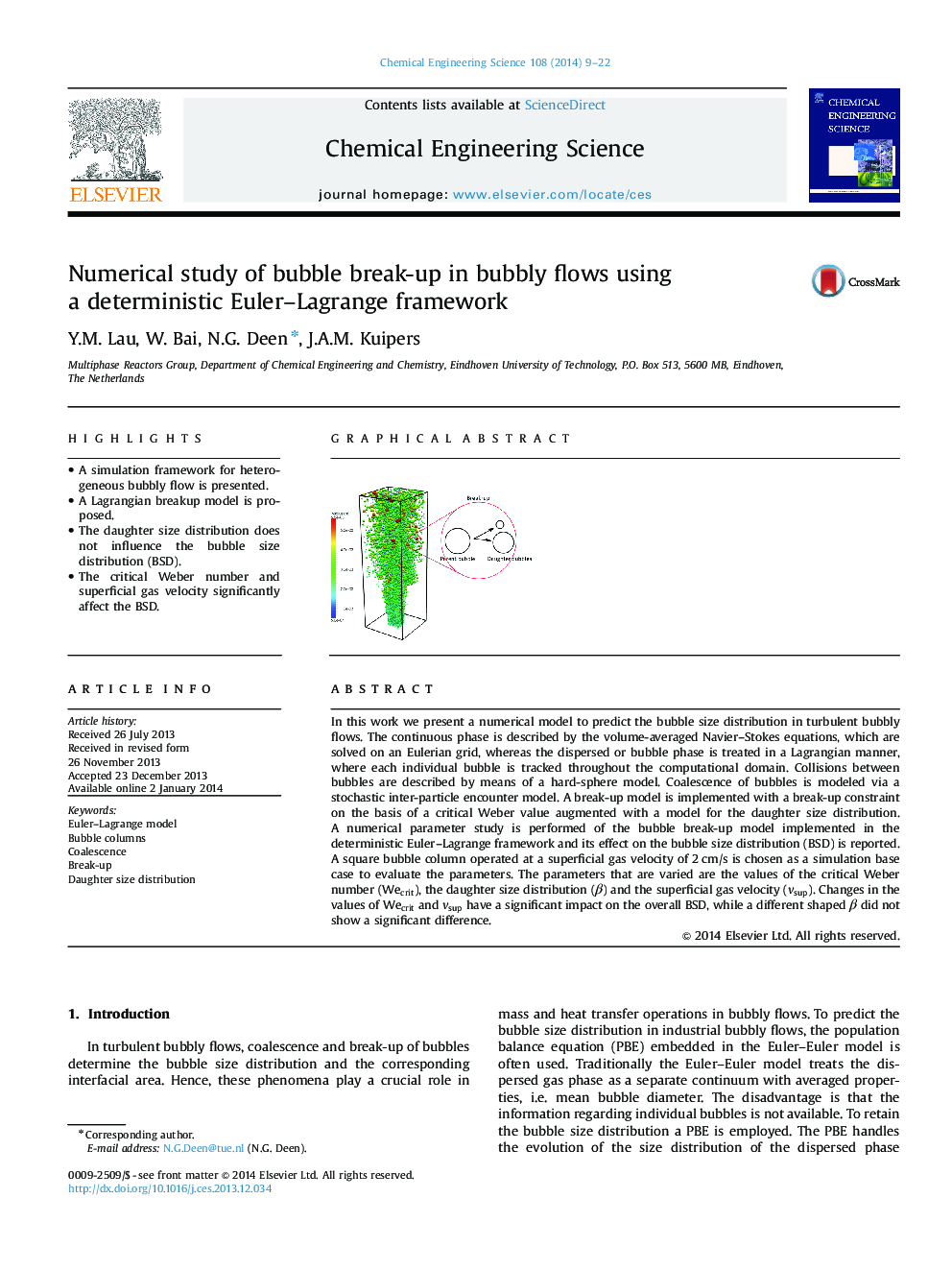| Article ID | Journal | Published Year | Pages | File Type |
|---|---|---|---|---|
| 154910 | Chemical Engineering Science | 2014 | 14 Pages |
•A simulation framework for heterogeneous bubbly flow is presented.•A Lagrangian breakup model is proposed.•The daughter size distribution does not influence the bubble size distribution (BSD).•The critical Weber number and superficial gas velocity significantly affect the BSD.
In this work we present a numerical model to predict the bubble size distribution in turbulent bubbly flows. The continuous phase is described by the volume-averaged Navier–Stokes equations, which are solved on an Eulerian grid, whereas the dispersed or bubble phase is treated in a Lagrangian manner, where each individual bubble is tracked throughout the computational domain. Collisions between bubbles are described by means of a hard-sphere model. Coalescence of bubbles is modeled via a stochastic inter-particle encounter model. A break-up model is implemented with a break-up constraint on the basis of a critical Weber value augmented with a model for the daughter size distribution. A numerical parameter study is performed of the bubble break-up model implemented in the deterministic Euler–Lagrange framework and its effect on the bubble size distribution (BSD) is reported. A square bubble column operated at a superficial gas velocity of 2 cm/s is chosen as a simulation base case to evaluate the parameters. The parameters that are varied are the values of the critical Weber number (WecritWecrit), the daughter size distribution (β ) and the superficial gas velocity (vsupvsup). Changes in the values of WecritWecrit and vsupvsup have a significant impact on the overall BSD, while a different shaped β did not show a significant difference.
Graphical abstractFigure optionsDownload full-size imageDownload high-quality image (238 K)Download as PowerPoint slide
